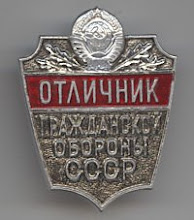Predictably, however, Romm has continued his bizarre crusade against new nuclear builds in the US. Seizing upon setbacks such as the NRC's letter challenging Westinghouse to demonstrate the efficacy of the AP-1000's shield building design to the rejection of AECL's ACR-1000 proposal in Ontario, his disdain for the nuclear option is readily apparent. And in keeping with past examples, the announcement that Toshiba's asking price for the South Texas nuclear project had increased by $4 billion came in for similar treatment.
However unpleasant the cost run-up is, it appears to be mainly a hardball negotiation tactic on Toshiba's part. As usual, veteran nuclear industry-watcher Dan Yurman is on top of things:
CPS interim general manager Steve Bartley told the San Antonio newspaper the $4 billion price increase could be a "negotiating tactic." He agreed with Mayor Castro that the decision to postpone the bond vote "sends a signal to Toshiba" that the delivered price of the twin reactors must come down. Bartley added that CPS Energy will send a delegation to Japan to sit down with Toshiba to discuss costs.Note that a similar process happened with Rosatom's nuclear tender in Turkey. The Russians originally offered an extremely high quote of $0.21/kWh, which of course Romm seized upon as "proof" that nuclear power is ruinously expensive. But as more sober observers always knew, it was really the Russians' desire to gouge the Turks, rather than anything intrinsic about nuclear power, which resulted in the high bid. As of a few weeks ago the Russians and the Turks were down to $0.15/kWh and were still negotiating. Look for a similar process in coming months with the project in Texas.
Romm's constant companion in his recent anti-nuclear tirades has been Craig Severance, a Republican (!) accountant and disco-era coal apologist. I have to hand it to Mr. Severance--he's an alchemist who would make Hermes Trismegistus jealous. He transmuted Joe Romm, crusader against climate change, into Joe Romm, shill for natural gas. I never thought I would see the day.
It seems that Joe Romm is merely among the more prominent individuals suckered by the natural gas industry's present marketing strategy, which is really quite brilliant. I might even admire it, if it didn't have the unpleasant side effect of wrecking the planet upon which I happen to live. Fortunately, Rod Adams has been paying close attention to this trend (see particularly here and here). Essentially, the natural gas industry is selling itself to the public as a "cheap bridge to a renewable future" while assuring its investors that the lean times won't last forever, and that soon their industry will be buoyed by strong demand resulting from economic recovery and the need for carbon reductions. A fine visual example of this cynical gambit pulled from the web:
Note that nearly all of the "clean energy alternatives" that Romm's recent post puts forward are really ways to burn natural gas. Compressed-air energy storage to "firm" wind capacity? Gas. Combination solar-thermal/gas plants? Gas. (And a particularly wasteful use of it, given the lower thermodynamic efficiency of such an arrangement compared to a CCGT). Severance even goes so far as to cut to the obvious and suggest
Another type of power plant San Antonio could build might be a natural gas power plant (of course, it can wait until at least 2015 to decide to do so, as noted above under “Rushed Decision”).The reason this isn't OK is not just because natural gas prices will recover from their currently depressed level by then (keep in mind that the REAL reason for recent low prices is the economic downturn, NOT the unconventional gas discoveries, and that those merely pushed the date that US natural gas production will begin to decline from the immediate to the intermediate future), both due to probable economic recovery as well as the fact that new legislation will encourage gas in preference to coal for electrical generation. Nor is it because the Russians are clearly hoping to manipulate the world energy market to maximize their gas export revenues in coming years. It's because the climate advantages of natural gas have been greatly exaggerated. It's true that gas is better than coal--but nowhere near as much as many believe, including Joe Romm.
The issue is methane. Burning methane for fuel may produce less CO2 than coal in the same applications, but methane is itself a very strong greenhouse gas--indeed, twenty-five times as much as CO2. While comparing the smokestack CO2 emissions from coal and natural gas plants may suggest that gas plants are vastly superior, this gives only an incomplete picture of the actual situation. A full-lifecycle analysis including the methane inevitably lost during extraction and transport leads to much more sobering conclusions.
This shouldn't really be news. See, for instance, this 2007 paper from Environmental Science & Technology, "Comparative life-cycle air emissions of coal, domestic natural gas, LNG, and SNG for electricity generation." The authors found that when the entirety of the fuel cycle is accounted for, conventional gas is nearly as bad for the climate as coal--and LNG is as bad as coal! Natural gas hardly seems to be the stuff from which a bridge to a climate-friendly energy future will be built.
The importance of accounting for non-CO2 greenhouse gases has recognized by professional climatologists for years. Indeed, a 2006 NYRB piece by James Hansen (who has been the target of repeated and increasingly unreasonable criticism from Joe Romm) noted that:
Further global warming can be kept within limits (under two degrees Fahrenheit) only by means of simultaneous slowdown of CO2 emissions and absolute reduction of the principal non CO2agents of global warming, particularly emissions of methane gas. Such methane emissions are not only the second-largest human contribution to climate change but also the main cause of an increase in ozone—the third-largest human-produced greenhouse gas—in the troposphere, the lowest part of the Earth's atmosphere. Practical methods can be used to reduce human sources of methane emission, for example, at coal mines, landfills, and waste management facilities.If we want to get serious about fighting climate change, we need real clean energy solutions. Funding underhanded schemes that will drain our pockets via fuel surcharges while depositing methane and carbon dioxide in the atmosphere do not fall into this category, however successful the gas industry's spin doctors may be at convincing credulous pundits like Joe Romm otherwise. If we we're going to act like the future and the climate actually matter, we must be willing to take the steps needed to build a genuinely climate-friendly energy infrastructure--and this is definitely going to include considerable investment in new nuclear facilities.


